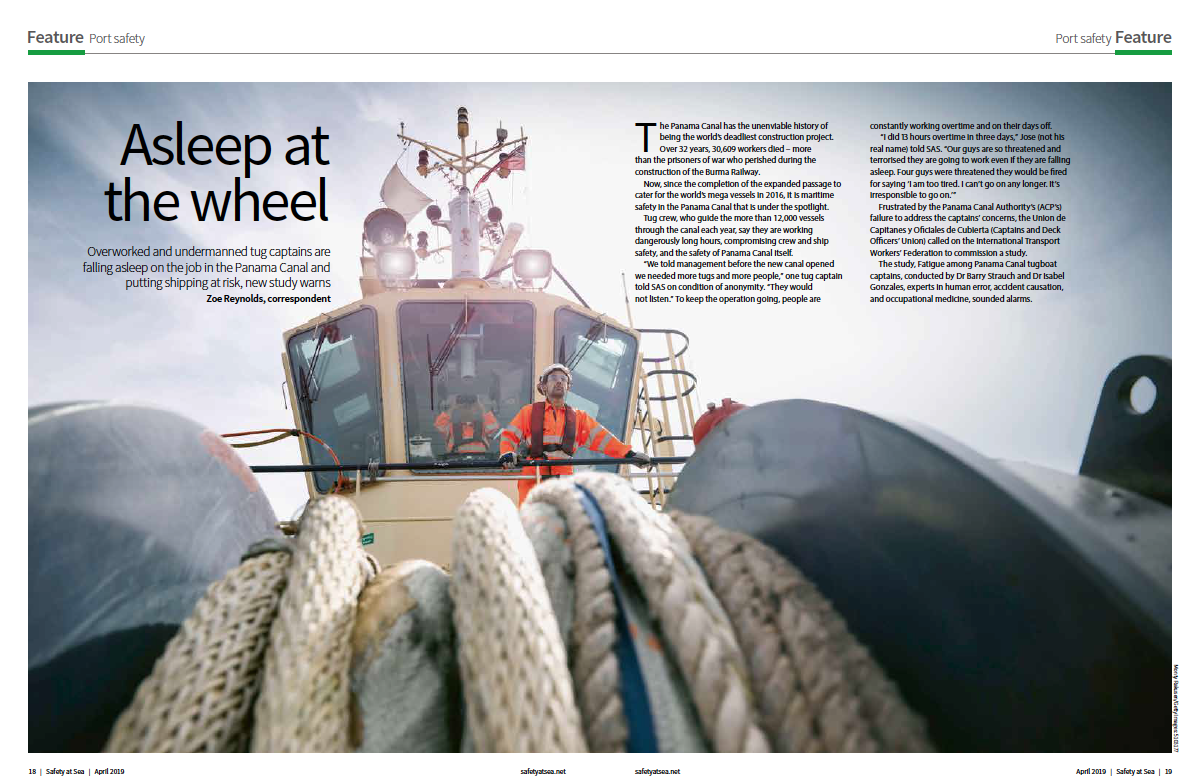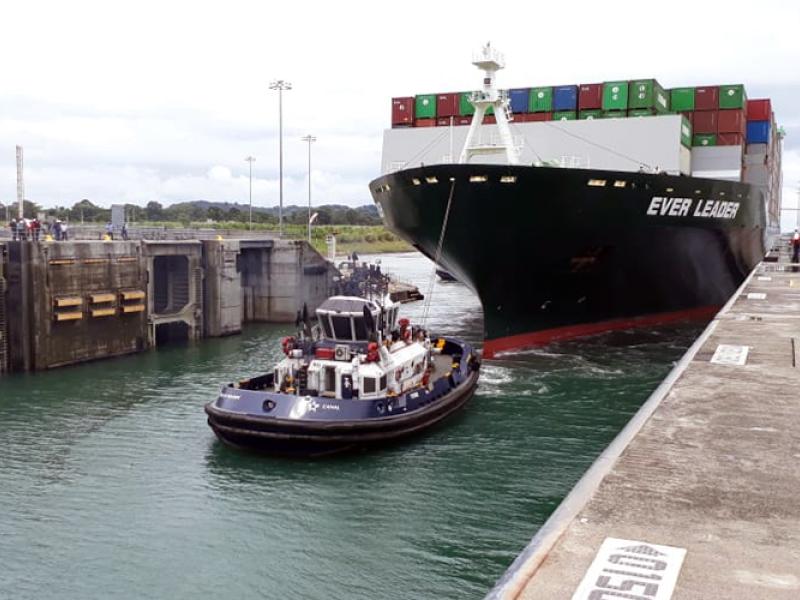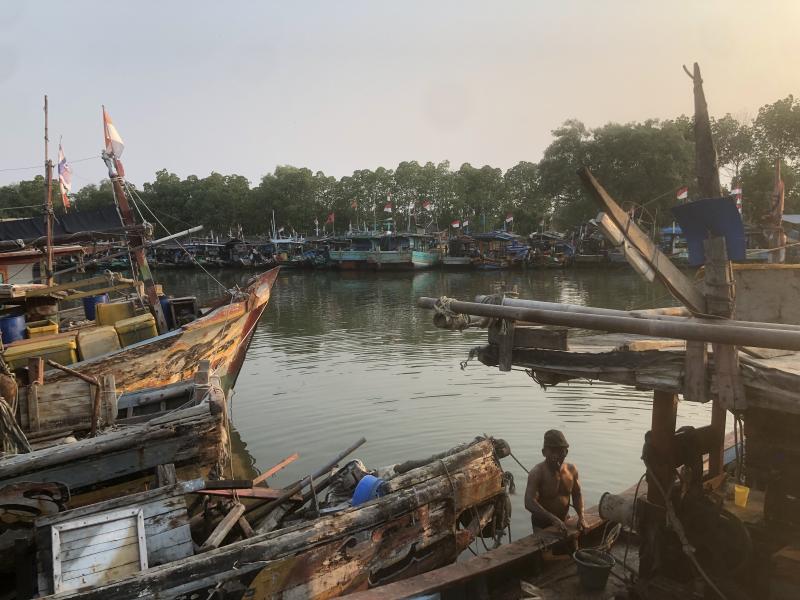The Panama Canal has the unenviable history of being the world’s deadliest construction project. Over 32 years, 30,609 workers died – more than the prisoners of war who perished during the construction of the Burma Railway.
Now, since the completion of the expanded passage to cater for the world’s mega vessels in 2016, it is maritime safety in the Panama Canal that is under the spotlight.
Tug crew, who guide the more than 12,000 vessels through the canal each year, say they are working dangerously long hours, compromising crew and ship safety, and the safety of Panama Canal itself.
“We told management before the new canal opened we needed more tugs and more people,” one tug captain told SAS on condition of anonymity. “They would
not listen.” To keep the operation going, people are constantly working overtime and on their days off.
“I did 13 hours overtime in three days,” Jose (not his real name) told SAS. “Our guys are so threatened and terrorised they are going to work even if they are falling asleep. Four guys were threatened they would be fired for saying ‘I am too tired. I can’t go on any longer. It’s irresponsible to go on.’”
Frustrated by the Panama Canal Authority’s (ACP’s) failure to address the captains’ concerns, the Union de Capitanes y Oficiales de Cubierta (Captains and Deck Officers’ Union) called on the International Transport Workers’ Federation to commission a study.
The study, Fatigue among Panama Canal tugboat captains, conducted by Dr Barry Strauch and Dr Isabel Gonzales, experts in human error, accident causation, and occupational medicine, sounded alarms.
It found fatigue-inducing schedules had two negative results – one on the health of the tug captains and the other on their performance and therefore the safety of Panama Canal operations.
“Because the tugs play a key role in the transit of large vessels with hazardous cargo through narrow and complex waterways, the potential for a catastrophic, fatigue-related accident increases,” the study concluded.
Within two years of the opening of the new canal (and 5,000 neo-Panamax transits), two major collisions have already occurred, both within two hours after midnight. At least one collision was directly attributed to tug captain fatigue. The ACP did not provide information requested for the investigation of either collision with the US Coast Guard (USCG) cutters.
US authorities were not permitted to meet with or interview tug captains, even with ACP personnel participating in the investigation. Nor were they provided the tug captains’ actual work schedule, the study noted.
Nevertheless, the US National Transportation Safety Board determined that the 18 April 2017 collision between tug Cerro Santiago and USCG cutter Tampa was caused by “the failure of the master of the Cerro Santiago to maintain a vigilant watch due to fatigue”.
In the other collision on 2 June 2016, USCG cutter Thetis was damaged when struck in the stern by a barge pushed by a tug in the Panama Canal.
ACP, however, appeared not to heed the warnings arising from the collisions. Instead management reduced crew on the tugs and extended work hours.

Crew cutbacks
On 12 April 2018, ACP removed a third of seafarers from the tugs, leaving two captains, two seafarers, an engineer and an oiler, the study found.
Then, on 1 July 2018, ACP removed the second or ‘relief’ captain, employed during transits of the new locks. “We are even more fatigued,” Jose told SAS.
“Guys are falling asleep. Since July we had seven tugs crashing into ships because guys fell asleep. It used to be once or twice a year; now we’ve had seven accidents in six months. Some guys don’t report accidents. These are the ones that are reported. Then there are the close calls. I’ve had a lot of those too – [caused by] micro sleeps. You only need to fall asleep for a few seconds to hit the ship.”
It is not only the captains who are suffering. One Panama linesman died of head injuries in the neo-Panamax locks in November 2017. A second suffered serious injuries in a line-handling accident in April 2017 and a third, Adams Caballero, was killed on
15 January 2019. The tug crew has blamed the death on staff cuts. “The authority has been trying to cut down on personnel,” Jose said.
“The tugs are undermanned. There are not enough people to station one fore and one aft. So, this guy had to run back and forth.”
Crew cutbacks mean less people are doing more work, and they are more isolated and fatigued.
The study pointed to fatigue’s role in shipping incidents, citing a 2004 UK Maritime Investigation Branch’s finding that “a third of all the groundings involved a fatigued officer alone on the bridge at night”.
Meanwhile, in 1990, the US National Transportation Safety Board determined that the 24 March 1989 grounding of tanker Exxon Valdez was the result, in part, of “the failure of the third mate to properly manoeuvre the vessel because of fatigue and excessive workload”.
The majority of the 55 captains (out of 150) interviewed for the study were being required to work excessive shifts ranging 12–20 hours, with insufficient rest breaks. They all suffered fatigue. Of those asked, 45% worked 16 × 20 hour shifts in 60 days, while 75% had difficulty sleeping.
Six tug captains admitted to falling asleep briefly while operating tugs. Six were involved in car accidents driving to or from work.
All tug captains interviewed for the study said fatigue was heightened by changes in tug operations since
April 2016. Ship traffic has increased, but extra tugs and crew have not been brought in, the study noted.
One captain interviewed for the report described the work as slavery.
“It’s like a prison. You are sitting there with no control on when you’re going to disembark, if you have a relief or not, (or) if you’re going to see your spouse or child. Even to take a bathroom break can subject you to disciplinary action. It’s like being a slave.”
Another said he sometimes asked the pilot for permission to go to the toilet. Another stopped drinking water to avoid the need for bathroom breaks altogether.
“You may be seated as long as four to five hours in a row, helping ships. In the new canal, there is no chance to let go of the controls. In the old one you may have five jobs, but you have 10–15 minutes between jobs.”
Tug crews highlighted that there are no rules to limit how many overtime hours can be worked.
“If you keep saying that you are too tired, you start to lose money from your accountability bonus,” one captain said. Rather than lose out on benefits, captains interviewed said they had developed coping mechanisms to stay awake. These ranged from drinking coffee to slapping themselves or dancing.
What was clear, one captain interviewed for the study said, is that the difference between working the old and new locks is “huge”, adding, “The second captain is necessary to do this job safely. With a second person, you can take a break and remain more alert. The job with one captain in the new locks is inhumane. You are the only person available to control the ship.”
Hellish workload
The captains complain that the work at the controls is relentless. Even if a pilot has ordered a vessel to stop, tugs must be watched because, as the water rises and lowers, the crew must ensure that the tug does not strike the wall of the vessel or the anchor.
In the new locks, workload is increased, with two tugs necessary to assist the larger, neo-Panamax vessels to transit. “There is no locomotive; only the tugs and the ship as the water rises or lowers,” one captain said. “The shifts are hell, especially for the tugs that pull the LNG tankers.”
While Panama is a signatory to the International Convention on Standards of Training, Certification, and Watchkeeping for Seafarers (STCW), ACP is an entity unto themselves, according to one captain cited in the report.
“In the last year or two it’s not uncommon to have captains work double shifts. They work 17 hours and have to be back [for their next shift],” he said.
Jose told SAS that when the neo-Panamax locks first opened, he would do a midnight watch for 8–9 hours and go home. “Nowadays, we have an additional two or three hours of continuous work in the new locks,” he said.
Fatigue is not the only problem, he added, stating that construction of the walls of the new locks is also an issue.
“When a tug hits the old canal walls, they are solid,” he said. “But with the new locks, if anything even slightly touches the wall, you get structural damage. The walls are really caving in. The fenders they use are useless and really expensive.” Even when the ship stops, Jose explained, the captain must remain in the middle so the tug does not touch the wall.
“We have to take a 45° angle,” said Jose. “I can’t let go of the controls even if I wanted to because I can’t let the tug touch the wall or dislodge the fenders. I would get a suspension or aggressive disciplinary action.”
While many captains in the report stressed the urgency of the issues impacting safety in the Panama Canal, they feel little is being done. Much of this is blamed on intimidation, the captains complain. On the day ACP axed the second captain, anyone who complained was threatened with dismissal.
“They ran a press campaign calling us terrorists and criminals,” Jose told SAS. “If you asked where [the second captain] was, they wanted to fire you. Eleven captains were threatened with dismissal.”
ACP denied all allegations raised in the study.
“The Panama Canal relies on best practices and complies with international standards for the safety of its operation and workforce,” a representative told SAS.
“The ITF is an organisation that does not have interference in the canal labour’s issues.
“The Panama Canal had recently commissioned two studies by independent experts in which the ACP’s union participated, which proved the work was safe.”
Jose acknowledged the earlier reports. He said they asked management to study the shift work and fatigue issue and an internal report dismissed the problem. Then ACP engaged The Maritime Group (TMG) London to do a study on the tug captains’ workload and operations in the new neo-Panamax locks.
“The report did recommend a mate to be introduced to relieve the captain, if ACP only had one captain on the tug,” Jose said. “This was ignored.”
When contacted, TMG managing director Malcolm Parrott confirmed to SAS the existence of the study, but declined to comment, stating that the report was commis-sioned by the ACP and “is confidential and their property”.
Captain Max Newman of ACP’s tug operations was also approached for comment, but no response was received at the time of writing.
The ITF contends that the ACP is attempting to sweep fatigue-related incidents and grave risks under the carpet.
The seafarers union has sent the Fatigue among Panama Canal tugboat captains report to the International Maritime Organization (IMO), International Chamber of Shipping, International Maritime Employers’ Council, and a number of shipping companies to raise health and safety risks related to the fatigue of tug captains, ITF inland navigation chair Yuri Sukhorukov told SAS.
“The serious and ongoing risk to captains, seafarers, vessels and the canal itself must be addressed and we call on all industry players to work collaboratively in order to find solutions,” he said.
One of the key recommendations of the study is that a new independent body should be set up to oversee the safety of operations due to ACP’s history of non-compliance with IMO rules and safe-operating practices.
Among its recommendations, the study states the new body should require ACP to restore a second captain during transit through the new locks, involve tug captains in decisions concerning tasks that are their responsibility, and for ACP to implement a safety management system and fatigue risk management system to ensure operational safety. This would include providing sufficient time for tug captains to adjust their sleeping patterns to each schedule change, limiting the number of continuous hours tug captains are permitted to work, provide rest facilities on or near worksites, and provide minimum rest periods between shifts.
By: Zoe Reynolds, correspondent
Source: Safety at Sea





